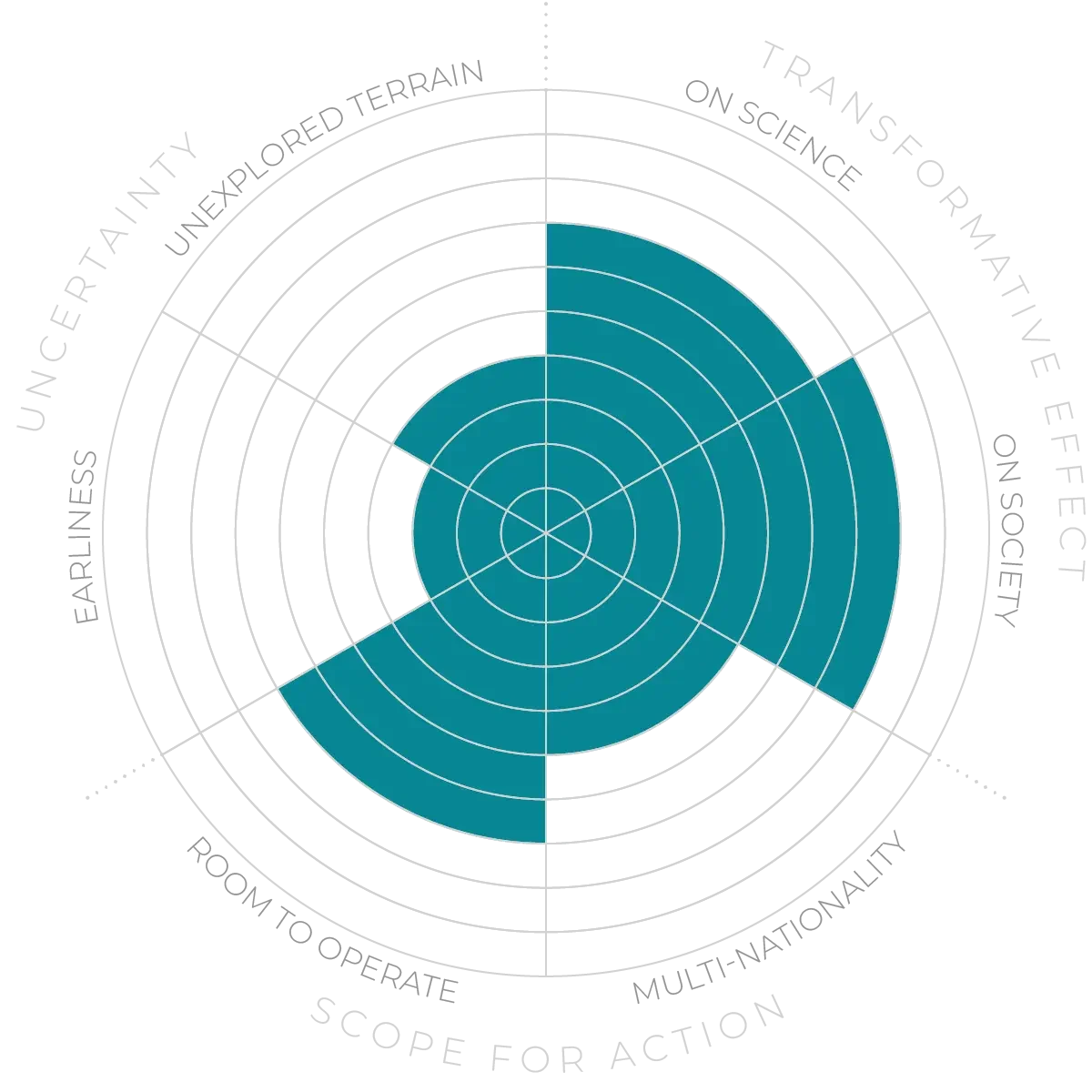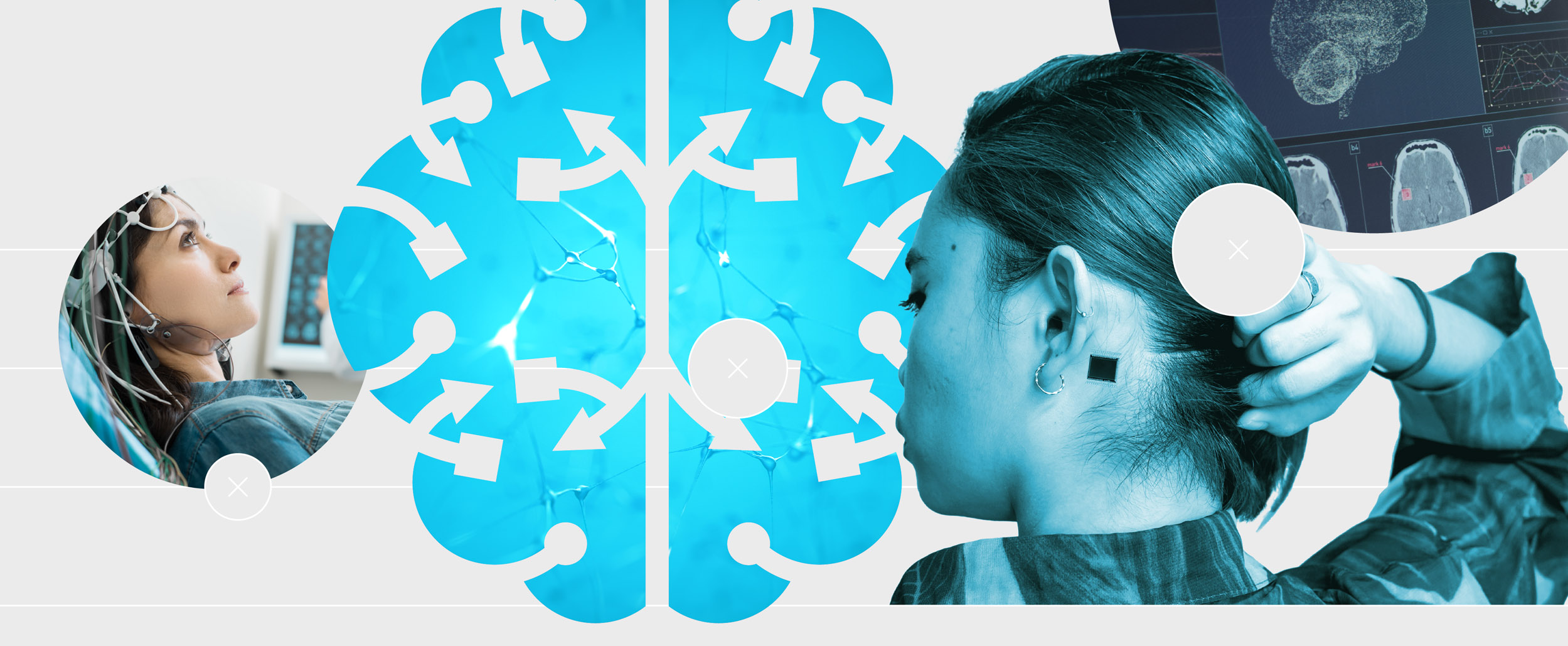Future Horizons:
10-yearhorizon
Open brain data stimulates research
25-yearhorizon
High-resolution devices facilitate access to some brain states
Big-data approaches to increasing amounts of raw brain data will enable researchers to decode cognitive and emotional states and to elucidate fundamental principles of cognition and memory.10 Machine learning has implications for neural decoding, including determination of the neural correlates of memory encoding, retention and retrieval.11 Speech decoding is now possible at near-normal speeds, with some systems boasting vocabularies of 125,000 words and with extremely low error rates, allowing near-naturalistic communication. 1213
The rise of predictive large language models means semantic decoding becomes possible even without brain implants; one has decoded continuous language from fMRI.14 Brain monitoring for interfacing with external technology is seeing rapid progress. Neuralink, for instance, has implanted its Telepathy chip in a human brain, enabling wireless, thought-enabled operation of a computer cursor. Many other companies are operating in this space, hoping to respond to brain signals to restore a person’s movement or speech. Synchron, for example, has implanted its Stentrodes in 10 people’s brains, and is making preparations to conduct a much larger trial of its technology.15 16
Monitoring of brain states - Anticipation Scores
The Anticipation Potential of a research field is determined by the capacity for impactful action in the present, considering possible future transformative breakthroughs in a field over a 25-year outlook. A field with a high Anticipation Potential, therefore, combines the potential range of future transformative possibilities engendered by a research area with a wide field of opportunities for action in the present. We asked researchers in the field to anticipate:
- The uncertainty related to future science breakthroughs in the field
- The transformative effect anticipated breakthroughs may have on research and society
- The scope for action in the present in relation to anticipated breakthroughs.
This chart represents a summary of their responses to each of these elements, which when combined, provide the Anticipation Potential for the topic. See methodology for more information.



